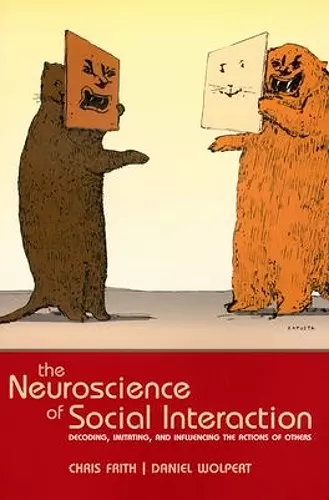The Neuroscience of Social Interaction
Decoding, imitating and influencing the actions of others
Format:Paperback
Publisher:Oxford University Press
Published:8th Jan '04
Currently unavailable, and unfortunately no date known when it will be back

Humans, like other primates, are intensely social creatures. One of the main functions of our brains is to enable us to be as skilful in social interactions as we are in our interactions with the physical world. Any differences between human brains and those of our nearest relatives, the great apes, are likely to be linked to our unique achievements in social interaction and communication rather than our motor or perceptual skills. Unique to humans is the ability to mentalise (or mind read), that is to perceive and communicate mental states, such as beliefs and desires. A key problem facing neuroscience is to uncover the biological mechanisms underlying our ability to read other minds and to show how these mechanisms evolved. To solve this problem we need to do experiments in which people (or animals) interact with one another rather than behaving in isolation. Such experiments are now being conducted in increasing numbers and many of the leading exponents of such experiments have contributed to this volume. 'The Neuroscience of Social Interactions' will be an important step in uncovering the biological mechanisms underlying social interactions - undoubtedly one of the major programmes for neuroscience in the twenty-first century.
With their book, Frith and Wolpert have made an important contribution to the nascent field of social neuroscience by precisely defining a specific subtopic and emphasizing different perspectives . . . A decade from now there will most likely be a journal, society and annual meeting devoted to social neuroscience, but it is sill unclear how all of the research relevant to this topic will combine to form this new discipline. Organizing the extant literature on the neuroscience of social behaviour, as this volume has done, will help shape the growth of this emerging field. * Nature Neuroscience, Vol 7, Number 9 *
ISBN: 9780198529262
Dimensions: 232mm x 155mm x 19mm
Weight: 563g
360 pages